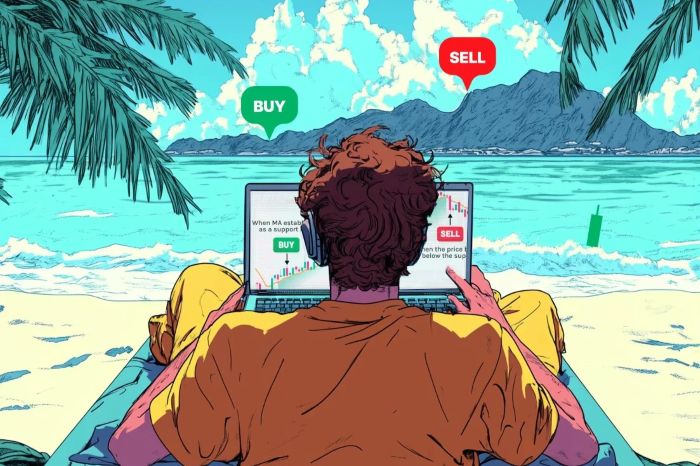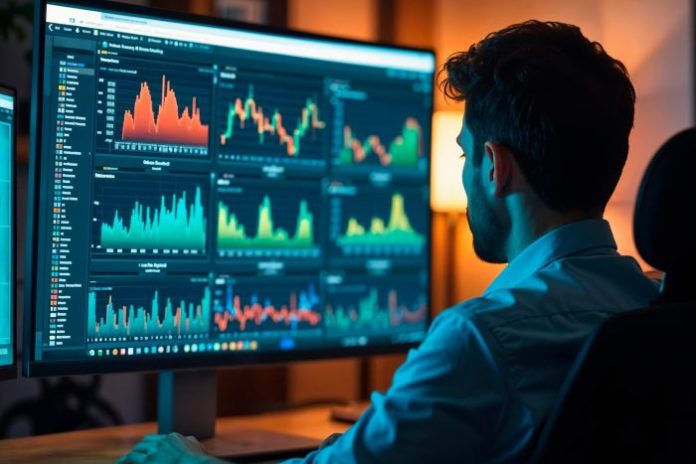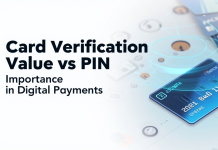You’ve seen the headlines. Crypto millionaires. Day traders quitting their jobs. That guy from your high school posting screenshots of his portfolio gains on Instagram. It looks so easy, right? Here’s what those posts don’t show you: the countless beginners who dove headfirst into trading and watched their savings evaporate faster than morning dew in the desert. According to research, approximately 90% of new traders lose money within their first year. That’s not because they’re stupid or unlucky. It’s because they skipped the most crucial step in their trading education: practice before investing real money.
Think about it. You wouldn’t perform surgery after watching Grey’s Anatomy, and you wouldn’t fly a plane after playing a flight simulator once. Yet every day, thousands of eager beginners open brokerage accounts, deposit their hard-earned money, and start clicking buttons like they’re playing a video game. Spoiler alert: the market doesn’t care about your enthusiasm, and it definitely doesn’t offer refunds.
The good news? There’s a smarter way to learn before investing real money. Platforms like Trading Game, a risk-free trading simulator give you access to both stock and crypto markets without risking a dime. Set up your virtual portfolio, test your ideas, and build the skills that separate winners from cautionary tales.
Key Takeaways
- Approximately 90% of new traders lose money within their first year due to lack of practice and preparation.
- Using a trading simulator allows beginners to learn market mechanics without risking real money and helps build emotional resilience.
- Traders should approach the market with tested strategies instead of relying on feelings; a simulator allows for experimenting without financial consequences.
- Risk management is crucial; practice in a simulator can make it instinctual before trading real money.
- Tracking and analyzing trades in a simulator helps improve trading skills and decision-making, preparing users for success in real markets.
Table of contents
1. Learn Market Mechanics Without the Sweaty Palms
Let’s be honest. The first time you place a real trade with real money, your hands shake. Your heart races. You second-guess everything. Is this a market order or a limit order? What’s a stop-loss again? Why is there a bid-ask spread, and who’s asking anyway?
When your money is on the line, your brain shifts into panic mode. You’re not learning anymore. You’re surviving. And that’s exactly when you make expensive mistakes.
A simulator removes the fear factor completely. You can fumble through order types, experiment with different positions, and accidentally fat-finger a trade without triggering a full-blown anxiety attack. Click the wrong button? No problem. Your virtual portfolio takes the hit, not your mortgage payment.
More importantly, you develop genuine understanding. Instead of frantically Googling “what is a trailing stop” while your position bleeds money, you can take your time. Read. Experiment. Watch how different order types behave in various market conditions. Master the mechanics until they become second nature.
By the time you transition to real trading, placing orders should feel as natural as sending a text message. That only happens through repetition without consequences.

2. Test Strategies Like a Scientist, Not a Gambler
Here’s a dirty secret about trading: most beginners don’t have a strategy. They have vibes. They buy because something feels right or because someone on Reddit said it’s going to the moon. Then they panic-sell when the price drops 5% because that also feels right.
Professional traders don’t operate on feelings. They have systems, rules, and extensively tested strategies. They know exactly when to enter, when to exit, and how much to risk on each trade. They’ve done the homework.
A trading simulator is your laboratory. Want to try day trading? Go ahead. Curious about swing trading cryptocurrency? Test it for three months. Think you can predict market movements using technical indicators? Put your theory to the test with zero financial consequences.
The beauty of simulated trading is you can run experiments that would be financially suicidal with real money. Try aggressive strategies. Test conservative approaches. Compare different timeframes. Track which methods consistently produce results and which ones just produce stress and losses.
Most importantly, you’ll discover what actually fits your personality and schedule. Maybe you love the adrenaline of day trading, or maybe you realize you’d rather check positions once a week. Maybe technical analysis clicks for you, or maybe you prefer fundamental research. You won’t know until you try, and a simulator lets you explore without paying tuition with real money to the market.
3. Build Emotional Muscle Memory
Let’s talk about something most trading courses ignore: psychology. Specifically, the fact that your brain actively works against you when money is involved.
When you’re winning, dopamine floods your system. You feel invincible. You start taking bigger risks, convinced you’ve cracked the code. When you’re losing, fear takes over. You hold losing positions too long, hoping they’ll recover. You exit winning positions too early, terrified of giving back gains. Your emotions hijack rational decision-making.
Here’s the thing though: you can’t truly simulate the emotional pressure of real money. When it’s fake cash, losses don’t sting the same way. But what you can do is build good habits that become automatic.
Think of a simulator as emotional training wheels. You practice sticking to your trading plan even when you’re tempted to break it. You experience the frustration of losses without the devastation. You learn to follow your rules consistently, building mental pathways that become stronger each time you resist an impulsive decision.
When you eventually trade real money, those emotions will hit harder. But if you’ve already programmed yourself to follow your system, to stick to position sizes, to honor your stop-losses, you’ve got a fighting chance. The traders who skip this step? They learn these lessons the expensive way.
4. Master Risk Management Before It Matters with Real Money
Risk management sounds boring until you blow up your account. Then suddenly it becomes the most fascinating topic in the world.
Professional traders obsess over risk management because it’s literally the difference between surviving and going broke. They know exactly how much they’re risking on every single trade. They diversify. They use stop-losses religiously. They never bet the farm on one position, no matter how certain they feel.
Beginners? They wing it. They throw their entire portfolio into one “sure thing.” They skip stop-losses because they’re confident this trade will work. They risk 50% on a single cryptocurrency because someone convincing made a YouTube video about it.
A simulator lets you practice proper risk management until it becomes instinctual. Set rules like never risking more than 2% of your portfolio on a single trade. Practice placing stop-losses at logical levels. Learn how position sizing affects your overall results. Experiment with portfolio diversification.
The beautiful irony is that good risk management feels boring in a simulator because you’re not losing real money anyway. But develop these habits now, and they’ll save you thousands of dollars later. The market will test you. It will tempt you to break your rules. Having months of disciplined practice creates muscle memory that kicks in when temptation strikes.
5. Track, Analyze, and Actually Improve
Most beginners treat trading like gambling. They make trades, hope for the best, and don’t keep any records. Ask them why they entered a position or what their exit strategy was, and you’ll get shrugs or vague explanations about “the trend.”
Winners keep score. They track every trade. They analyze what worked and what didn’t. They identify patterns in their decision-making. They improve systematically.
Simulators make this process painless. Every trade is automatically recorded. You can review your complete history, see exactly where you made money and where you lost it. You can spot patterns like “I always hold losers too long” or “I exit winners too early” or “I trade too much when I’m bored.”
This feedback loop is invaluable. You’re not just practicing trading. You’re practicing becoming better at trading. You’re learning about yourself as much as you’re learning about markets.
Your Next Move
Look, you’re going to learn trading one way or another. The question is whether you’ll pay for your education with fake money or real money. One path is uncomfortable but free. The other is expensive and potentially devastating.
Smart traders choose the free option. They spend months mastering mechanics, testing strategies, building discipline, and learning from mistakes in an environment where mistakes are just lessons, not financial catastrophes.
The market will still be there when you’re ready. But you’ll arrive prepared, confident, and far more likely to join the 10% who actually succeed. That’s worth the practice.











